Sand dunes can create very interesting images, particularly when using their shapes and heavy contrast against the sky to create an almost abstract photograph. They are a great subject to include in your portfolio, and there always seems to be a good level of demand for this kind of shot on stock sites. For that reason, you might want to try mastering them. Here are the tips you will need in order to get started on the right foot.
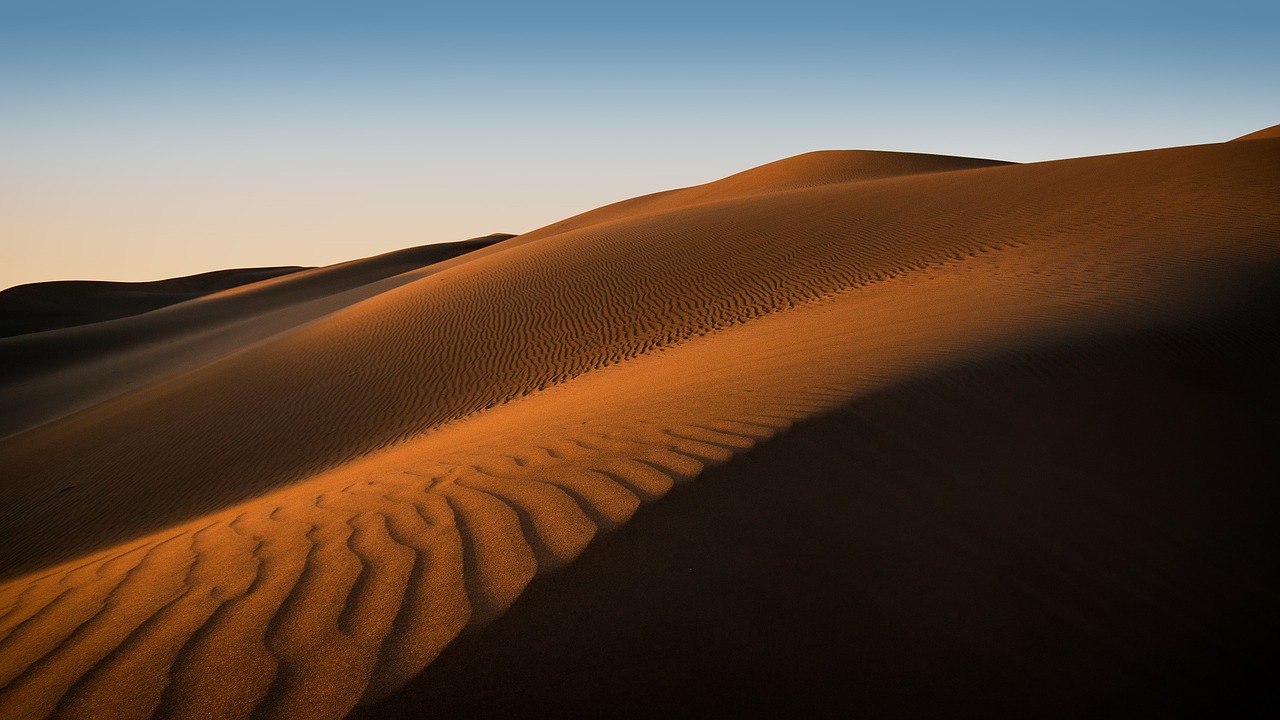
Sand Dunes | CC0
1. Know your dunes
The first thing you need to do is to study your dunes. Different dunes and sandy areas around the world will have different looks. A beach will be a very different place to photograph compared to a desert. They may also have specific trademark shapes based on the wind or water patterns of that particular area. Since there are so many factors influencing how they will look, it’s a good idea to read up on dunes and also see what kind of images other photographers have taken at your chosen location.
You might start off simply by photographing the dunes which are the most convenient for you to get to, particularly since this will essentially be your first practice. Later, however, you might want to plan trips based around particular dunes. Remember that there is also going to be some element of surprise when you arrive, as dunes are constantly shifting in the wind. Other things can affect your photograph, such as the footprints or vehicle tracks of someone who has been through the area recently. If you’re not careful, you could end up marking the dunes yourself when you travel to get to them. It’s important to think about these things in advance and consider your route and destination carefully.
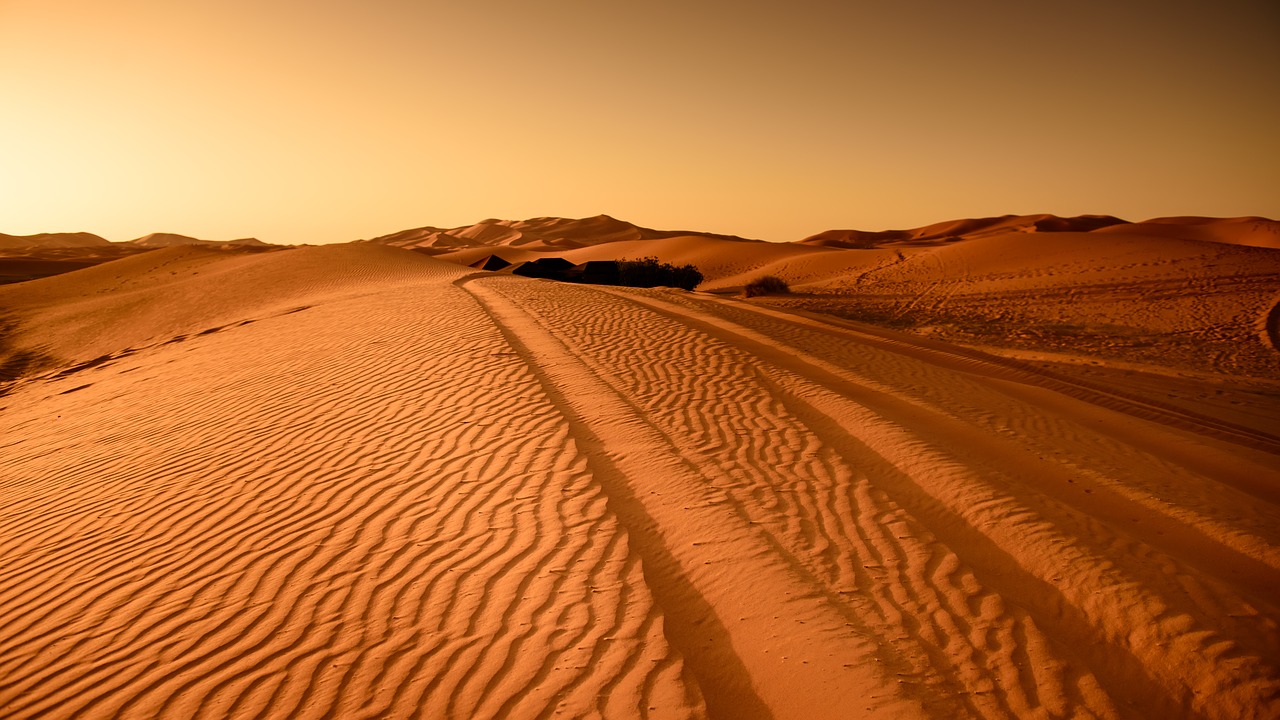
Morocco Desert by Jörg Peter | CC0
2. Be weatherproof
You will need to consider weatherproofing both yourself and your equipment. On a beach, you could end up getting caught in the rain or sprayed with light foam from the sea. In a desert, the dunes are normally very hot places with little chance of rainfall. In all cases, you need to be as prepared as possible.
One strong suggestion would be to use a plastic cover to protect your camera. Even if you aren’t at any risk of rainfall, there is still likely to be some wind. This is what shapes the dunes in the first place, and it can carry many tiny grains of sand into the air at any moment. You don’t want these getting inside your camera, and you equally don’t want them getting inside your eyes.
You could consider wearing plastic goggles or a full mask on your face to allow you to both see through the harsh sunlight and prevent sand from gritting your vision. This will help you to continue shooting for longer, so it could really help to get the shot you’re aiming for. You will also want to wear sun cream in all situations and also to cover your body with the right fabrics. Lightweight choices are good for the desert, as well as options like linen, which are traditionally worn in hot areas. Don’t be tempted to bare as much skin as possible to stay cool, as this will increase your risk of getting sunburn while you are standing around shooting. You will also need a hat, preferable with a wide brim to shield your eyes from the sun even further.
3. Keep sand out
You will absolutely not want to change your lenses if there is even a hint of a breeze around you. This could be catastrophic, as small grains of sand could get into the body of your camera. Even if you’re able to get them out via a cleaning company later on, it will certainly bring your shoot to an end as you will begin to see dark artifacts appearing in your shots. You could even jam up or damage the inner workings of your camera, leaving it unable to function.
You should exercise caution even if you don’t think there is any wind around. It’s much better to plan ahead and have a couple of camera bodies set up with different lenses. You may also have to commit to using just one lens if you don’t have that possibility. If you really thing it is important to change the lens, consider going into an enclosed area such as the inside of a vehicle. Close the doors behind you and close all vents to prevent air flow before taking the lens off, and replace it quickly so that you minimise the risk.
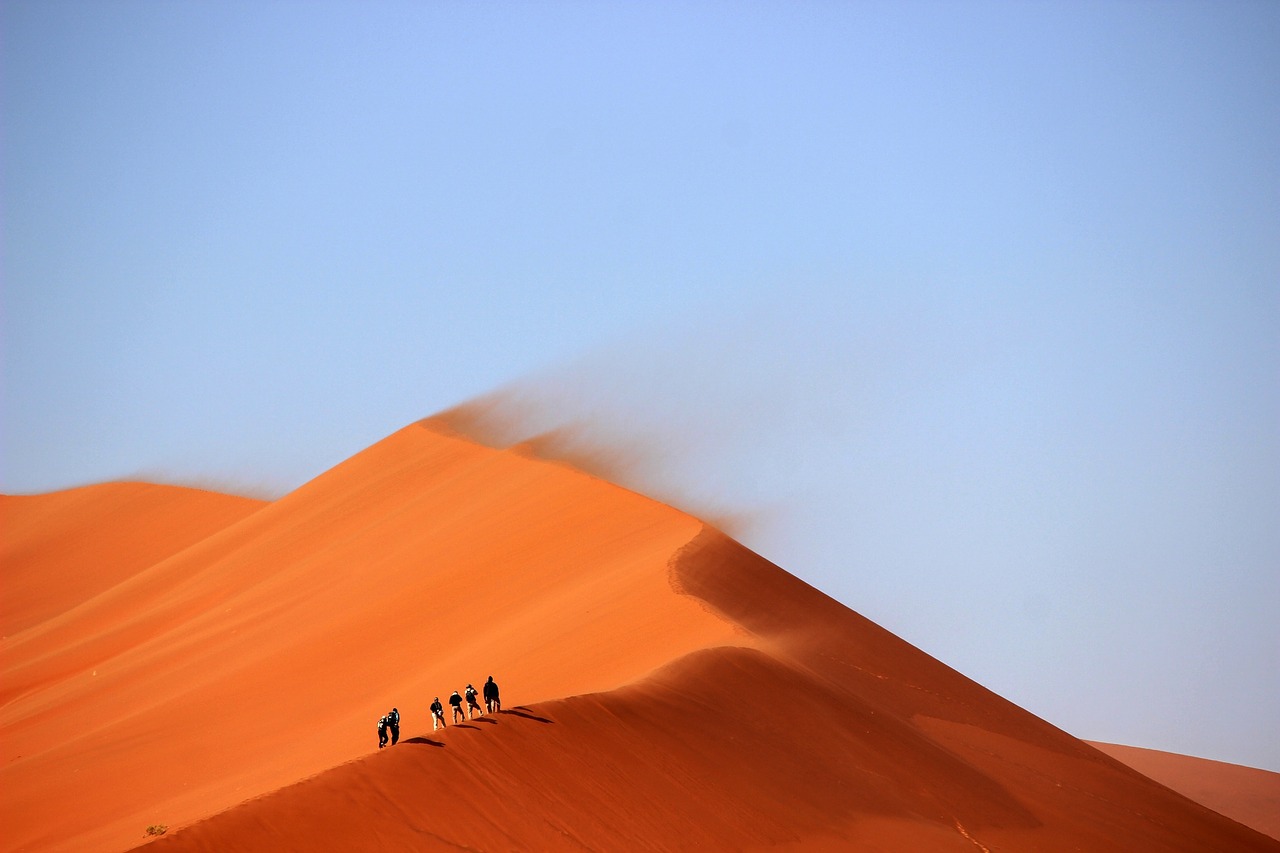
Sand Dunes (Windy) | CC0
4. Protect and clean
There are certain parts of your camera kit that you can clean after using them in a sandy area. Others might not be so easy.
For example, think about your reflector – this is probably easy to wipe clean with a damp cloth when you get home. You could even shake it in the air to get rid of most of the sand! However, other items aren’t so easy to wash. Your lens, for example, might even be impossible to clean – particularly if grains of sand whipping across the glass leave scratches and marks behind. Use a clear filter on your lens in order to prevent this from happening. It’s far cheaper to replace the filter than the lens!
If you aren’t using a cover for the whole camera, or if it doesn’t cover your lens, you should use a fixed prime lens or one of a certain range of zoom lenses which does not move externally when you are using it. If it does slide forwards and backwards, even if during focusing, then sand could become trapped inside as it moves back. This will leave you with scraping noises and small amounts of damage to the inner part of the lens every time you zoom in the future, and it’s almost impossible to clean it out.
You should also think about your tripod. Is it a complex model with lots of dials, joints, and so forth? If so, it might not be easy to clean. A simpler option could work – or even a cheap tripod that you can pick up just for this purpose in case you can’t get it clean again afterwards.
5. Look for patterns
Now, onto getting the shot that will look great and do your trip justice. You may think that a dune is a dune is a dune, but each will have unique characteristics that you can use to improve your composition.
Start by looking for patterns in the sand. These may look like squiggly lines, hundreds or even thousands of them in one place. If the wind moves in a particular way, you might end up with a smoother series of lines, or even a surface which might appear totally smooth. These patterns aren’t the only shapes to look for: the shape of the top of each dune or ridge can come into play, as can the shift between light and shadow as the sun moves across the sky. All of these can provide fascinating patterns which might result in a geometric or abstract composition.
Simple shots usually work the best when dealing with sand dunes. Try not to make it too complex in your ambitions to capture the whole scene. One area of a dune might be more successful as a strong photograph than a zoomed-out view covering everything in sight.
You can also consider converting to monochrome during post-production, as this can make the dunes even more abstract. That can result in some fascinating images that have people staring and trying to understand what they are looking at.
Above all, keep an eye open for the beauty of this natural landscape. While it can be interesting to include human elements such as travellers or footprints, it’s not always necessary to create a good shot. Work with what the wind has provided, and train your eye for those interesting shapes and patterns!
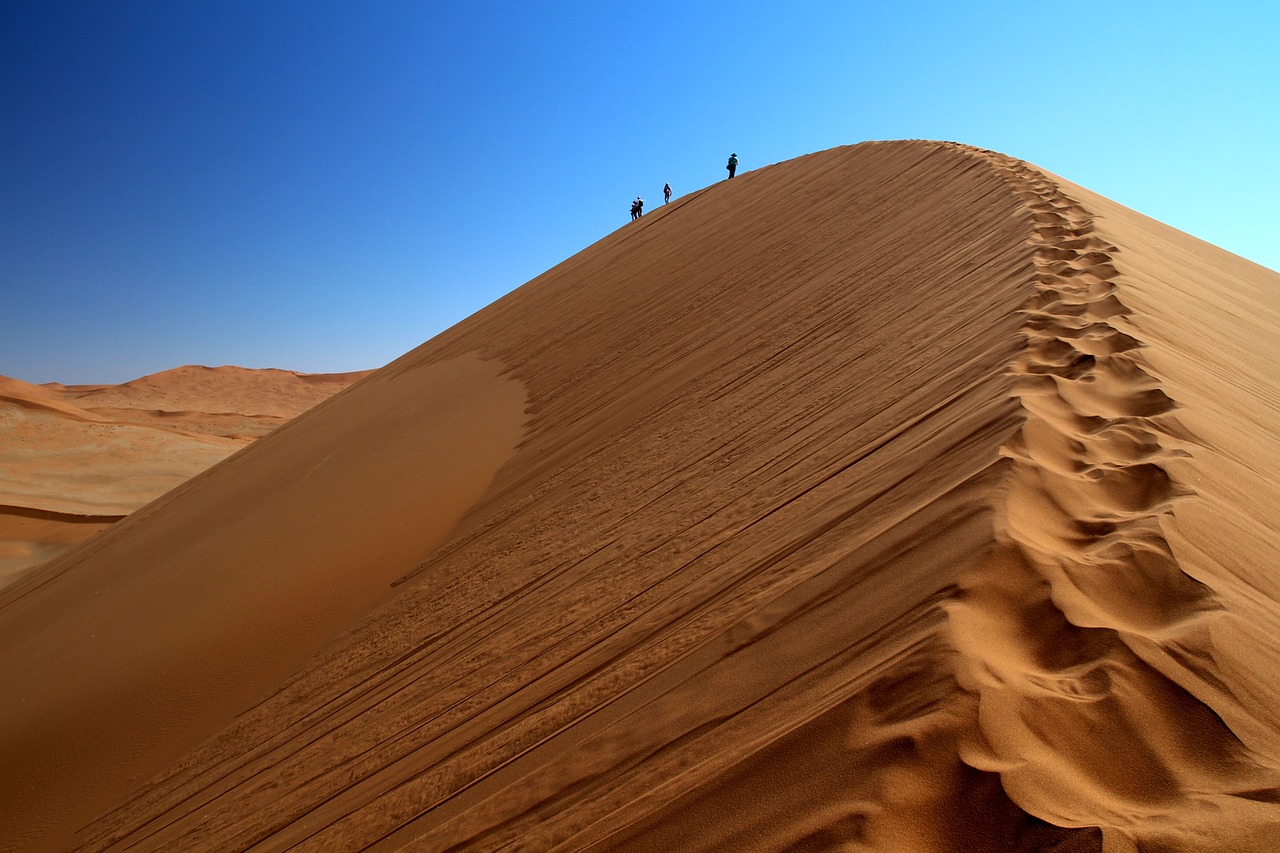
Namibia Desert by Tanja Wilbert | CC0
6. Use timing
Finally, think about the timing of your visit. During sunset or sunrise, it’s possible for the sand to reflect back the colours of the sky, just like you would find in a snowy environment. When the sun is low in the sky, you’ll see long, deep shadows which can make a great play with the height of different ridges. When it is directly overhead, you’ll see a smoother view and could get a greater contrast against the colour of the sky.
Think about timing, but unlike with other landscape disciplines, don’t be tempted to stand in one place and wait for perfect light. Sand dunes are constantly shifting, and you might not get the result you expect if you wait too long! What’s more, with a different view in every direction, you won’t want to miss the opportunity to take as many shots as possible.
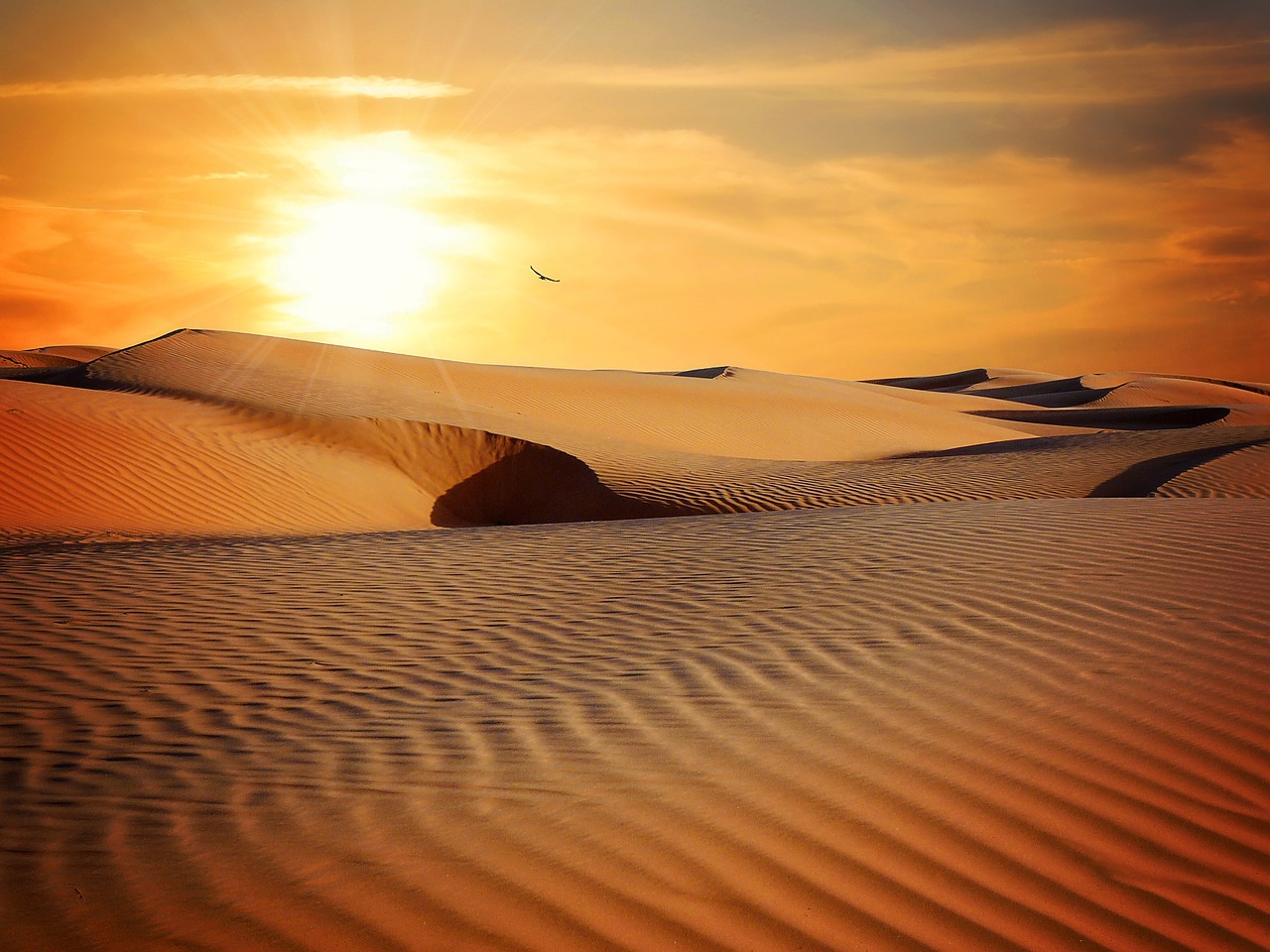
Desert sand on sunset | CC0
A single sand dune shoot can provide hundreds of great shots that have their own distinct look. Get out there and try it next time you have an opportunity, and put these tips to good use!
Photo license link: CC0